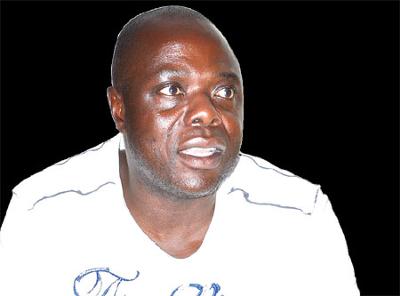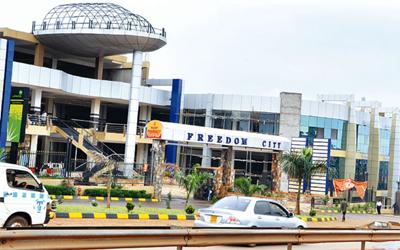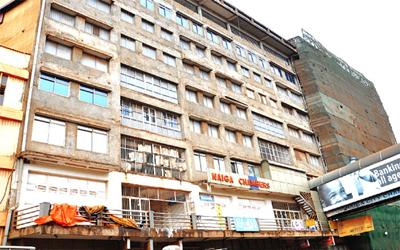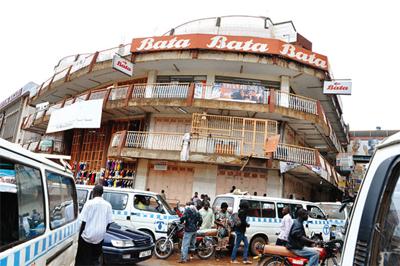Meet John Sebalamu the Ugandan Businessman: Owner of the multi-million dollar shopping mall, Freedom City

Sebalamu John the Successful Uganda Businessman

Freedom City Building

Naiga Uganda Chambers

Mini price Building Owned by Uganda Businessman
Today, he is associated with Freedom City, the multi-million dollar shopping mall and leisure centre in Najjanankumbi on Entebbe Road. But things have not always been rosy for billionaire real estate mogul John Sebalamu as MICHAEL KANAABI found out
HUMBLE BEGINNINGS
The town is abuzz with talk of one Sebalamu, who is putting up a multi-million dollar shopping arcade on Entebbe Road and allegedly owns about a quarter of the buildings in the city. Who is Sebalamu?
That talk is exaggerated. I don’t own half of the property they allege I own. I was born and raised in Kasanje, Masaka district. I dropped out in S1 in 1982. Life was hard. I then started peddling matooke on a bicycle. I would buy it from farmers in Kasanje and bring it to Nyendo trading centre.
For how long did you do that?
Not long. Those days, paraffin was scarce and many villagers could not access it. That presented a good business opportunity. I started hawking paraffin in Masaka. I would fasten four jerry-cans of paraffin to a bicycle and move from one flea market to another. I made some good money. My siblings were also doing the same business.
A few years later, we moved to the main market in Masaka town, where we acquired stalls and started selling shoes.
How did you manage to move from peddling paraffin to owning a stall in the market?
I pooled resources with my elder brother John Bosco Muwonge (now arguably one of the top five property owners in Kampala).
Our move was mainly triggered by the change in the political climate in 1986. The NRM had just taken over from Tito Okello Lutwa’s military junta and the stable political environment was conducive for a more permanent business.
We would buy shoes from traders and sell them in Masaka. This was easy because the road blocks manned by UNLA soldiers of the previous regime were now gone.
Also, commodities were cheap. I would buy a pair of plastic shoes from Kampala at sh25,000, which was cheap then.
I dreamt of owning a complex like Garden City So, how did you leave the market?
We took advantage of the stable political climate to make money. We gained popularity in Masaka as the two hardworking brothers. This was in 1988.
Our elder sister, Naiga, who, sadly, died a year later, had always acted as our mentor. (Sebalamu named Naiga Chambers, one of his many buildings in town, after her) She had incredible foresight in business and had two shops that dealt in second-hand clothes in Masaka town. She used to buy them from Kampala. She invited us to join the business in 1988.
Armed with a capital of about sh20m (which was about sh200, 000 after the 1987 currency reform), I joined the business. We used to buy the clothes from Kampala and sell them in Masaka.
After Naiga’s death, I partnered with my elder brother to run the shops. Over time, our stock grew by leaps and bounds and the Masaka market limited our business. It was time to move on. We would buy clothes from Kampala and sell them in Masaka
COMING TO KAMPALA
What was the next step?
In 1992, armed with a capital of sh100m, a fortune at the time as the dollar exchange rate was sh900, I moved to Kampala with my brothers Muwonge, Lubega, Segawa and sister Christine Nabukeera (all of whom are now renowned property owners in Kampala). We wanted to trade in Kampala because it provided a much bigger market.
Kampala is a big city. Didn’t you have any misgivings about venturing here?
Together with my siblings, we were dynamic and ready to embrace the business opportunities. On top of that, I thought sh100m was decent enough to venture into business.
So, did you follow up on the ambitions to go to Dubai and import merchandise?
Yes. My brother Bosco and I were the first Ugandans to import new clothes from Dubai to Kampala. We would bring the clothes in bales called dozen (dazini in common speak).
In Dubai, there were traders with so much merchandise that they didn’t have storage space for it, so they would give it to us on credit. We would come back, sell it then return to Dubai and pay them. We also hired a shop on a building now called Skylite Arcade next to Buganda bus park.
We inspired many people to join the business seeing as we were prospering. Some of these are now tycoons in Kampala. Because of this, I was nicknamed “Capital” by fellow traders, who look at me as the person who opened a way for them in business
Freedom City shopping and leisure center
Most people have come to hear about you after you embarked on the colossal Freedom City project on Entebbe Road. How did you come up with that?
Upon returning in the property business in the late 2000s, I found that the prices of property downtown Kampala had skyrocketed. There was a lot of confusion downtown as well. So, I decided to do something different.
A couple of years ago, I had admired Garden City mall and wished to own a complex like that one day.
So, here I was toying with the idea of a modern shopping and leisure centre out of town. I decided on it and started looking for land outside town.
I landed on 3.5 acres of prime land at Najjanankumbi on Entebbe Road. I acquired it from Buganda Land Board at $1m and started constructing Freedom City.
This project looks massive. How much do you estimate its total cost will be upon completion?
We expect it to consume over $20m (about sh45b). I think the cost would have been higher if I didn’t own a construction firm. I am my own contractor. I also procure my own materials — everything from sand to metal panels. I own a mine, where I get all the sand I use on the project.
People ask me where I got this plan from. They don’t believe I developed it myself. That’s why I keep changing things. And considering I had decided to make real estate and construction a full-time job for me, I am supervising the construction personally monitoring every detail of it.












